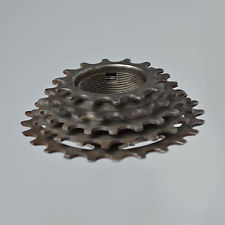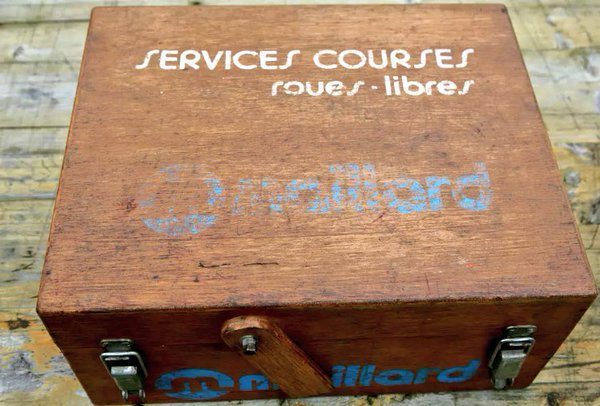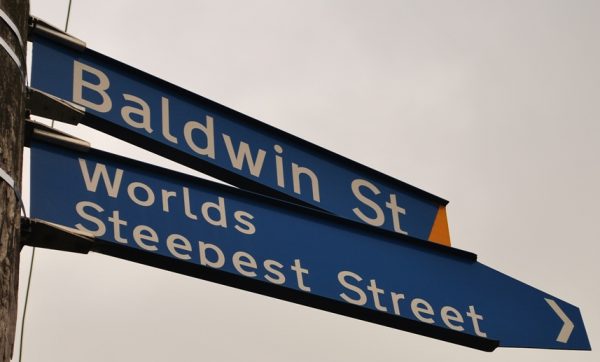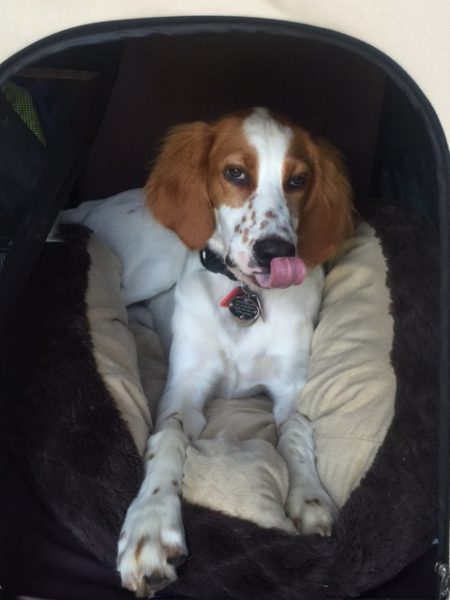I don’t understand what we used to do with gearing on a bicycle to compete. I’m dating myself, which is fine, but when I first started racing, there were 5 cogs on the back and the smallest was a 13. But the biggest was never more than a 21 or maybe a 23. That is with a 42 tooth small chainring.
Yesterday, I was riding up a 18% grade by WImberley Texas. I was messing with my Garmin at the bottom, so I lost all momentum, but even when I started riding “normal”, I was using a 28 in the back, and I ride a 39 in the front.
I climb alright, nothing stellar. I wrote a post on climbing in general. I’ve ridden a ton of steep climbs. I rode the steepest street in the world down in New Zealand. And there is no way I could have climbed that street in a 42 x 23.
I’ve ridden the British Milk Race a couple times and there are very steep climbs in the race. You come to a sign and it says 1 in 4 or 1 in 3. That is 25% or 33%. Steep. And I’m positive that I never had more than a 25 on the back there.
Even with a 6 speed freewheel, you could have a 13 -15-17-19-21-23 and that was it. And that is two teeth between each cogs.
I have ridden a bunch in Colorado the past few seasons and have done most of the cimbs that used to be included in the Coors Classic. Independence Pass or Loveland Pass, etc. don’t seem that hard with a 39 x 25.
I’m thinking most of the hard climbing I did was hard because I was always overgeared. Like I was doing isometric exercises while trying to pedal my bike. For sure that was the case in the MIlk Race. I don’t know how many hills I had to tack to make it up them. I remember riding beside a photographer, carrying a bag full of equipment and he casually took my photo, just walked up the hill a few steps, turned around and took another picture of me. I was thinking to myself that it would be faster, and easier, to just walk.
On the Levis Team, we had a Maillard Freewheel box. We could build our own freewheels. We had some aluminum cogs for special days, but I don’t ever remember riding a 26 or 28 in the back. I’m not sure why. I don’t even know if that freewheel kit had gears that big in it?
Anyway, gearing selection is key now. When the Tour of Spain adding in these stupid crazy pitches at the end of stages, guys are riding compact gearing in the front. That would have been unheard of just a decade ago. I guess it is an advancement of the sport. I know I just leave an 11-28 on my training wheel all the time now. Never know when you’re going to hit a wall.









I’ve seen a picture of you ( Maybe Eddie B’s book) paper-boying a climb at the Milk Race.
I think some of the fundamentals were that materials severely limited what was available. 5 speed freewheels were the limitation of both chain and sprocket manufacturing, plus the ability for a gear lever to make a precise shift. These days I think a 10spd moves the rear mech 3mm, that just wasn’t an affordable bit of kit to make with friction levers and the materials available at the time.
Also, capacity of rear mechs is so much higher now, technology and research has moved them on immensely, to be able to go between 11 and 30t with easy on my ‘short’ cage Di2 rear mech.
I still miss my corncob 11-21 10sp cassette though, although it was only really any use in the East of England where it’s flat.
Amen. 42-53 up front. 12-18 in back for crits. 13-21 on training wheel. 13-23 for the big/steep climbs (in my world that meant Snake Alley, Mt. Evans and on the Morgul Bismark. Even riding the long passes, a 13-21 was all I used…. Guess I stood more then than I do now!
Yeah, down here around Louisiana I never had anything lower than a 52 – 44 on the front and 14-18 or 14-21 on the back. In the mid-80s it was mostly 52 – 42 on the front, then 53 – 42. Campi cranks wouldn’t really accomodate anything lower than 42. It wasn’t until the 90s that I was on a bike with 53 – 39 on front and 12-23 or 12-25 on back.
Steve we were just talking about this the other day, 13-21 on a 6 speed with 42/52. Got me up plenty of 25%ers when I was a teenager, more as a challenge than an enjoyable part of the ride! Looking back being overgeared probably contributed to torn core muscles that I had a few years after.
Oh to be that light again though where I didn’t need a compact chainset!
All the best mate, keep up the good writing.
In the mid 80s, BRAC schedule started with Boulder’s Sunshine Hillclimb in March and we somehow managed that in a 42-22 or 42-23. I do remember the distinct taste of blood in my saliva aftewards!
I can still recall Greg Demgen’s comment on the first 7-speeds, “You can ride your whole career on one freewheel!” That was actually the early freehubs, but still classic.
(Now, how about a post on giving up gear choice to go single front ring….)
We’ve gone from adding all the extra cogs to allow smaller shift jumps for optimum cadence to dumping the front derailleur because gears are hard to learn and adjusting front derailleurs is even harder.
I’ll take my 12-25 road or 11-32 MTB any day over the 11-40 or the beyond absurd 10-50 gear jumps.
I only used a freewheel with a 23 cog on it for “hilly” events. And even those would require some degree of steepness for use. For most road race events with “moderate” climbing, I had one with a 21. For criterium racing, a straight-block: 13-14-15-16-17-18. And yes, a 42X53 on the front.
But I also weighed 135 lbs (and standing 5’10”). Now that I know the impact that “being fat” has on climbing, I know that had I weighed 155+, I’d have been making different gearing choices.
I’m glad to see the culture shift towards high cadence as opposed to proving manhood through gears that were inappropriate for the situation.
I always had that taste after time trials!
A racing bicycle still looks best with a only a 23 or 24 tooth cog as the largest one and a 39-53 crankset. However it is nice that an 11 speed 12-25 cassette gives you a 12-19 straight block and 3 extra climbing gears on one back wheel.
Back a million years ago when I raced (circa 6 to 7 speed) it was definitely a show of your manhood to stay seated on a short climb. On the other end, I’ve seen guys show up with 13-14-15 and spacers for flat kermesse races around Ghent in the early 90’s. For the hills, you put on the 23 and fought to the front.
Nowadays, without technical MTB sections I’d never stand up. Seems almost unnatural, and blows up these old legs.
The steepest street may be in Pittsburgh, Canton Avenue, and is included in the RAAM double winner Dan Chew’s great informal race, The Dirty Dozen. Come and ride it, first Saturday after Thanksgiving.
Steve, keep in mind you’re a professional cyclist with an FTP well over 300w. Also consider you’ve trained your body over decades to be able to ‘climb well’ at <70rpms. You are the .001% of road bike owners. This is why current road gearing (while having good range and small steps) is still way too 'hard' for the average joe. If you take out crit racers and guys 'racing' down mountains at 40mph+ no one really needs a 53×11 and 39×28 is way too hard of an easiest gear. Always funny that the bike industry sells 1st timer Joe and Jane the same gearing that Sagan and company use to race down mountains and spring at 40mph. .01% of road bike riders need anything more than a 48×11 hardest gear (which has a ratio between 53×12 and 53×13). 2by drivetrain road bikes should ship with 11 speed 50/36×11-32, or thereabouts. Racers can throw on non-compact gearing if that's what they need, but it shouldn't be the other way around.
gearing has gone stupidly nutty now… in the winter I ride 6 rings on the back and my training all around ride I ride 8 on the back on the road bike. My race bike has 10 on the back 11-25.
Now, gearing has gone up to 12 on the back, wtf… who needs all them gears?
I’m sure we could get down to just 8 if we had the right gear ratio.
Now, its electronic shifting, more stuff to break. I won’t touch electronic shifting, having taking years of electronics and having worked with electronics on many defence projects (weapon systems, aircraft, etc…) I realize how easily things can fail.
I much prefer cable and few gears as possible. Simple is good… complex leads to things breaking.
Who really needs all those gears? the things we buy into amazes me… its getting stupid out there, keep it simple is key.
When I started getting into riding Bicycling Magazine had a touring guy that always made fun of racers with big thighs and a bottom gear of 42×18. Inevitably he’d talk about such a rider blowing by him early in a century and then twiddling his “half-step plus granny” set up (52-48-24 up front) past the totally exploded racer.
Back then my thing was seeing the straight blocks where you could literally change a drive side spoke without removing the freewheel (although you’d have to bend the spoke a bit). 13-18, 6-spd.
I think what really did the whole gearing thing was powermeters and oxygen vectoring doping. At some point people realized that given a speed/grade your power would be the same. Even though on paper I know that makes sense, when I got my first power meter I had to go out and do the same hill, same power, massively different gear, before I realized that, yeah, a 53×11 up the hill at 300w just doesn’t make sense if I can spin a 39×17 instead (or whatever gear). Plus, with oxygen boosting doping (EPO, transfusions), you could really load your aerobic system (by spinning a lower gear) without using up your muscles per se.
Looks kind of like Ravine Street in Cincinnati, but three blocks shorter. It was the street on which Glenn Danzig and Charlie Manson grew up. It was one of the two ways up Mt Auburn from the Cincinnati Velo Club group rides, the other was the same climb, but two miles long. I usually preferred the shorter more painful route as it got over with quicker…
You should definitely do the Dirty Dozen at least once. Race your old buddy Gunnar who climbs all those 30% grades on a single speed and even a fixed gear one year.
Steve’s Blog…..being read by the Amish!! So cool. They don’t need all THEM gears!
The first limit was freewheel over hub. The right-side bearing sat at the “24” end of a 13-24 freewheel. The freehub was a requirement to realistically produce a reliable 6-speed cogset. Anyone run across the old Malliard freehub with the aluminum ring? Close but so far off. Shimano did it right.
The second limit was rear mech design. I think it’s still called the slant parallelogram? Anyway, the mechs have gotten better on wider ranges in mysterious ways I can’t explain.
The third limit was convention. EVERYONE had 42/52. Period. It was that or you were a tourist with a triple. Some of that was due to the soft aluminum used for the cranks and the old spindle setup. Now the lines are blurred between low-gear bikes and racing bikes which is fine by me.
As soon as Shimano had made their mechanical index shift lever, (frame mounted) it was all over but the shouting for brands like Mavic, Sachs and more. The combination of the freehub and the index shifting was unstoppable.
I don’t remember when chains had to get skinnier. Maybe 8 speed?
…and the chains seemed to last forever. Too.
Correct me if I’m wrong, but I think the cog set on George Washington’s bike had wooden teeth.
Bikes were not invented yet, in the 1700’s. But his horse had wooden teeth. ????????????
In makes my head (and knees) hurt to think I raced Mt. Washington Hillclimb as a junior in the ’80s with a 42×25 low. I don’t even know how I tracked down a 25 cog as 23 (with a 52/42 up front) was my usual “bailout” gear. Oh to be young, light, and indestructible…
Yeah , just what happened to that there space rocket shuttle thing . one blew up an another went ‘n burned up just way too complicated ..horses ‘n buggies are what works….every time i know of
does tucker sleep in his crate in the van?
Oh just get a motorcycle if you can’t hack the gearing.
I remember riding a “straight” block 5 speed. 14-18 That’s with a 42/52 up front. Then going to a Suntour 6 speed. 13-21. I was in heaven. Now a days its a 11 speed 11-28 with a sub compact 36/52 up front. Times have changed.
I can still remember picking up my first “pro” bike at the shop – a tree trunk thighed guy took a look at the 13-28 6 speed freewheel in back and laughed, “Where the hell are you going- the Alps?” but in a few years he was right, I was grinding away in a 42 X 28…something I couldn’t do now. 30 X 28 is more like it, but I don’t like to walk if I can avoid it.
Cycling’s becoming like US politics – if you express any reservations about 11+ cogs on back, electronic shifting, power meters and all that stuff you’re instantly branded as a Luddite who wants to go all the way back to wooden wheels, aluminum bottles and single speeds. The cries are, “We MUST let the bicycle evolve!” but those same folks would get their chamois all bunched up if someone suggested LeTour be raced on fully-faired recumbents. Just because we CAN doesn’t mean we MUST.
I remember being in a “race” with you and your brother at Tuttle creek in June of 1979 or 1980. Colnago days. It really wasn’t much of a race because after the first few flat miles you and your brother dusted me up the first hill not be be seen until you guys lapped me (at least once). Anyway, fwiw, to this day, I still have a vision of you guys (out of your seats pushing bigger gears) and disappearing. I’m returning to cycling after a three+ decade hiatus and really enjoying the new technology and reading your blog.
Keep it simple is key to what? My Di2 gears have never needed adjusting in the 3000 miles I have ridden on them, and a total of about 5 battery charges.
You can’t prefer cable to electronic if you haven’t experienced it.
The original Superweek Holy Hill course back in the ’80s had a switch back climb called “The Corkscrew” which was probably 10% for a block and probably not the steepest climb on the 11 mile road course, but it split the field every lap. One of the Holbrooks stated that if you’re not climbing it in your 42×18, then you’re not riding very fast and you may as well give up. Awesome course, somewhat dangerous in places, but the local residents shut that one down.
Corncob.
12,13,14,15,16.